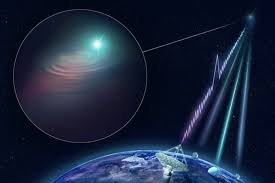Astronomers have detected a new set of mysterious, repeating radio signals from a galaxy located about three billion light-years from Earth, sparking intense scientific interest and public fascination. These signals, known as fast radio bursts (FRBs), are incredibly powerful pulses of radio waves lasting only milliseconds but releasing more energy than the sun emits in days.
The newly observed FRBs are particularly unusual because of their regular repetition—a rare phenomenon that suggests a stable, periodic source. Scientists propose that highly magnetized neutron stars called magnetars could be the source, although more exotic possibilities, including advanced extraterrestrial civilizations, have not been completely ruled out.
The signals were picked up by the CHIME telescope in Canada and later confirmed by other observatories worldwide. Detailed study of the FRBs\' polarization, frequency, and timing may offer clues about the environment in which they originate—such as the presence of strong magnetic fields or interstellar gas clouds.
While most scientists lean toward natural explanations, the discovery reignites public imagination about the possibility of intelligent life beyond Earth. Projects like SETI (Search for Extraterrestrial Intelligence) plan to monitor the area closely for any further anomalous activity.
Regardless of their origin, FRBs offer valuable opportunities to study the vast, largely unknown intergalactic medium. As astronomers continue to decode these enigmatic signals, each new discovery brings humanity one step closer to understanding the full complexity of our universe.


















monica
Wow
Fausta
Okay
Keydonn
Nice
Samuel Boafoh
universe
Polina
That's great
IDDRISU ABDUL WARIS
Hu
hossman
Wow
Suhuyini
Okay